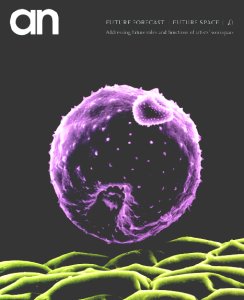
As part of a celebration marking the 25th anniversary of a-n The Artists Information Company a specially commissioned series of debates looks at the future for artists. Faisal Abdu?Allah and Ian Hunter give their views on what artists? workspace will look like in 2015 ? and see this week?s supplement for more.
What will artists expect from a workspace?
The notion of workspace is in a state of flux. As a practitioner with a space, I find that more think-time happens outside of the space, as I tread the London urban landscape. The space just becomes a haven for meditation and paperwork. I think the expectations now are flexibility and ?floating space?. What I mean by that is artists setting up studios at the points of their inquisition. (FA)
Studio and workspace provision for rurally based artists, designers and craftspeople is likely to be a key area of policy in support of the new rural regeneration and rural-cultural industries initiatives now being framed. The expectations are two way: what are the arts open to give, and what role will they play in the new rural economy (and culture)? So it will be studios and housing according to need. (IH)
What will be the differences between artists? needs then and studio provision now?
If we look at the history of practice and the level of research by contemporary practitioners, you begin to see trends. I am keen on leasing studios in the unconventional arenas. (FA)
Clusters based on new technologies; new communications hubs in rural areas; sustainable rural resources. Also, more energy-efficient, ecologically sustainable studios based on investment in, and utilisation of, local skills, materials and resources. Farm-based art projects, i.e. ?Artfarms? and ?rural design studios? initiatives are likely. (IH)
How important will physical workspace be? What might compensate for its lack?
Physical workspace will be the dinosaur. New technologies, such as laptops and mp3s, compress space. Compact or virtual forms of retaining and documenting ideas will be at the forefront of practice, making the pencil redundant. (FA)
Emergence of a raft of new hybrid rural workspaces is evident: e.g. cattle-auction centres as performing arts studios; redundant farm buildings as artists? studios; surplus farm barns as video production and editing centres, cow byres as installation project spaces; and innovative rural design for purpose-built studios and artists? houses, utilising traditional rural materials and skills (earth-built or hay-bale constructed studios, etc.). (IH)
How should cultural planners and artists? support agencies prepare for future space?
They should re-assemble the historical relationship that space, artefact and concept had with artists, and imbue it with the liberty, confidence and resource of the ?floating studio?. (FA)
Faisal Abdu?Allah, FRSA,is Artist and lecturer at the University of East London
Ian Hunter is Artist and Director of Littoral Arts, Lancashire
These and 37 other interviews by Paul Glinkowski form the ?Future forecast: Future space? research resource. For more information and to contribute to the debate, visit http://www.a-n.co.uk



